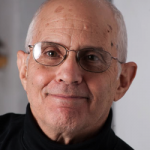Finding the Cracks Where the Holy Light Comes In
olegbreslavtsev/Thinkstock
The cracks where the light gets in may not be immediately apparent, but they are everywhere and it would seem to be our duty, both to ourselves and one another, to find them.
Tis the season to be jolly, when our days are supposed to be merry and bright, and we bask in the affection of loved ones, share good cheer with strangers, help the needy, shop and spend. But mostly it is a season of light. For millennia, spiritual traditions have ritualized the use of everything from flaming bowls of olive oil to candles to colorful electric bulbs to honor the Divine light. In the darkest days of the year, we are reminded that, as Leonard Cohen famously put it, “There is a crack in everything; that’s how the light gets in.”
For Christians, the coming of the light is about the birth of Jesus. For Jews, it’s the miracle of Chanukah. In pagan traditions and indigenous cultures, it’s the lengthening of daylight heralded by the winter solstice. On a deeper level, regardless of theology, the image of light penetrating darkness resonates with this passage in the Upanishads, a mantra that Hindus sometimes invoke as a prayer:
From falsehood, lead me to truth.
From darkness, lead me to light.
From death, lead me to that which is undying.
The bursting forth of light, in other words, symbolizes the soul’s ascendancy from ignorance to wisdom, from suffering to bliss, from wrong action to goodness, from attachment to the material and the transitory to the realization of our Eternal, Infinite nature. That’s what I think of when I’m in a home where Hanukah candles are lit; when Christmas lights twinkle and choirs sing carols; when celebrants dance as the solstice sun goes down; and when, on Diwali, Hindus, Sikhs, and Jains light the oil lamps called diyas.
In the last few winters it has been hard for many of us to locate the light. This year it seems that every day brings evidence of how dense the darkness has become. Whether it’s the flames that destroyed parts of California, or the horrors in Yemen and Syria, or the assault on truth and the suppression of climate science, or the vulgar Tweetstorms from high places, or the plight of refugees, or the rise of authoritarian leaders, or the mass shootings, or the epidemics of opioid addiction and teenage depression, it seems that darkness has enshrouded humanity.
That said, the cracks where the light gets in may not be immediately apparent, but they are everywhere and it would seem to be our duty, both to ourselves and one another, to find them. If we look, we can find them in the eyes of a child, in reunion hugs, in the warm handshake of a stranger happy to meet us, in acts of kindness and generosity; in Bach or a cornball Christmas ditty; in highbrow cinema or the umpteenth viewing of It’s a Wonderful Life. Light can even be discerned in public affairs, in the unprecedented number of women and minorities who stood for public office; in world leaders who recognize the climate crisis and fund renewable energy research; in the rise of social concern among high school and college students; in the work of intrepid reporters and dedicated public servants who keep on digging for the truth. Once found, we need to embrace those sparks of light, rejoice in them, and share them.
And always we must remember that the principle source of light is within us. Divine light dwells in the deepest part of our being and it’s accessible no matter how dark our circumstances or how bleak the sociopolitical outlook appears. That bleakness is no match for the indwelling spark, just as a dark room is no match for a lamp.
Every year at this time, people say “Why can’t it be Christmas all year long?” Maybe it can be, if we take the seasonal image of lighting up the darkness to its deepest level and turn it into something more than a sectarian symbol. We owe it to ourselves—in every season of course, but especially now—to turn within, locate the Divine light, and bring it forth to shine as we speak and act with our fellow humans. Doing so makes it easier for everyone else to locate their inner light and easier for us to detect signs of light in the dreary shadows of the outer world and thereby brighten all our days.


